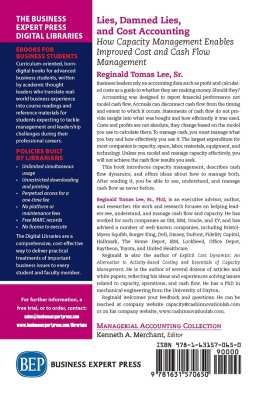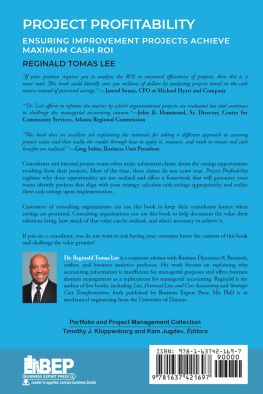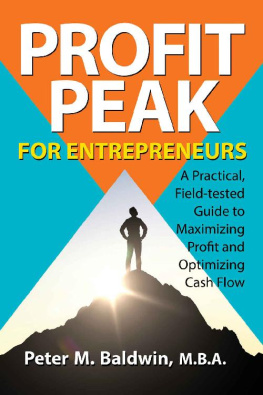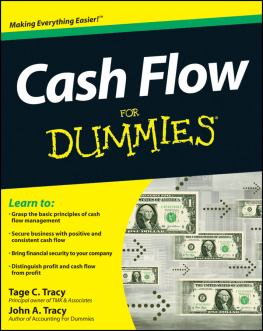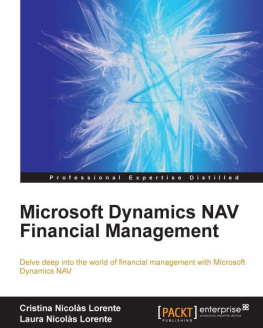Lies, Damned Lies, and Cost Accounting
Lies, Damned Lies, and Cost Accounting
How Capacity Management Enables Improved Cost and Cash Flow Management
Dr. Reginald Tomas Lee, Sr.

Lies, Damned Lies, and Cost Accounting: How Capacity Management Enables Improved Cost and Cash Flow Management
Copyright Business Expert Press, LLC, 2016
All rights reserved. No part of this publication may be reproduced, stored in a retrieval system, or transmitted in any form or by any meanselectronic, mechanical, photocopy, recording, or any other except for brief quotations, not to exceed 250 words, without the prior permission of the publisher.
First published in 2016 by
Business Expert Press, LLC
222 East 46th Street, New York, NY 10017
www.businessexpertpress.com
ISBN-13: 978-1-63157-065-0 (paperback)
ISBN-13: 978-1-63157-066-7 (e-book)
Business Expert Press Managerial Accounting Collection
Collection ISSN: 2152-2795 (print)
Collection ISSN: 2151-2817 (electronic)
Cover and interior design by S4Carlisle Publishing Services
Private Ltd., Chennai, India
First edition: 2016
10 9 8 7 6 5 4 3 2 1
Dedication
To my wife and better half, Tamara
Abstract
Business leaders rely on accounting data such as profit and calculated costs as a guide to whether they are making money. Should they?
Accounting was designed to report financial performance not model cash flow. Accruals can disconnect cash flow from the timing and extent to which it occurs. Statements of cash flow do not provide insight into what was bought and how efficiently it was used. Costs and profits are not absolute, they change based on the model you use to calculate them.
To manage cash, you must manage what you buy and how effectively you use it. The largest expenditure for most companies is capacity; space, labor, materials, equipment, and technology. Unless you model and manage capacity effectively, you will not achieve the cash flow results you seek.
This book introduces capacity management, describes cash flow dynamics, and offers ideas about how to manage each both. After reading it, you will be able to see, understand, and manage cash flow as never before.
Keywords
Accounting, Activity based costing, Activity cost, Average costing, Break-even, Capacity, Capacity accounting, Capacity cost, Capacity management, Cash, Cash flow, Cash management, Constraint, Cost, Cost accounting, Cost allocation, Cost assignment, Cost curve, Costing, Cost improvement, Cost management, Cost reduction, Costs, Customer profitability, Demand, Demand management, Dynamic capacity, Economic costs, Efficiency, Effectiveness, Explicit cost dynamics, Goldratt, Input capacity, Isocost, Isocost curve, Just-in-time, Lean, Lean accounting, Management accounting, Managerial accounting, Metrics, Operational improvement, Optimization, Output capacity, Performance, Performance improvement, Performance management , Process costing, Process design, Process Improvement, Process optimization, Product costing, Product profitability, Productivity, Profit, Return on investment, ROI, Service costing, Service profitability, Six sigma, Standard costing, Static Capacity, Theory of Constraints, Throughput accounting, Total quality management, Unit profit, WACA, Worth, Worth and capacity analysis
Contents
I must first thank my family for allowing me the time, space, and motivation to do this project. My wife, Tamara, was not thrilled by the prospect of my writing another book, but reluctantly agreed and provided incredible support throughout the entire process. I cant thank her enough for standing by me and being an incredible wife, mother, friend, motivator, and drill sergeant. Thank you, Tamara. Youre an amazing woman.
The kids, Sunny(master editor), A-Mac, Bella, Wokka, Toughman, and Dukeus (I almost never call the kids by their real names unless Im mad) were all troopers in making sure I had the space, inspiration, and love necessary to complete the book. Rudolph (father) and Fred (mother) were early inspirations. My father was an accountant and an incredible role model, while my mother was an extraordinary educator, motivator, and friend. We miss them both dearly. My sister, Wynnette, and my brother, Marc, continue to inspire and support. Id certainly not be who I am without them.
I thank my academic peers and reviewers: Dr. Joe Castellano, Dr. Bertie Greer, and Dr. Ken Merchant for their reviews and support; Dr. Glen Johnson for his ongoing conversations and support and Dr. Thomas Scott for his detailed thoughts and feedback as well. Their ideas and input have greatly influenced this book.
There are a few people I thank professionally. First is Michael Fournier of the Society of Cost Management for his insistence on my writing this book. If it werent for Michael, there would be no book. Scott Isenberg of Business Expert Press has been fantastic to work with. Finally, Ive worked with some great folks when publishing work related to this book. Thanks to Ed Stone, Barry Brinker, Paul Sharman, Michael Hughes, Jim Edwards, Beth Gongde, and Ashlie Carlson.
There are other friends I thank as well. First, Id like to thank my friend and former student Marianne Novac Davis. Weve done some projects together and I hope to do more. I deeply value her ideas and friendship on many levels. Angela, Jordan, Scot, Xan, Deanna, and Libby were all very supportive throughout this process, especially on those long Saturday afternoons. Rob and Tony from Four80East provided the tunes that helped inspire as always. Great guys, great band, great music! Thanks guys.
Finally, as always, I thank my friend Pepe for his years of influence and support during my writing projects.
I wrote this book for the curious business man and woman. You are the ones who are always looking to learn more. Through your learning, youve likely realized that there is too much focus on accounting data and not enough on understanding the factors that influence the data. You see your colleagues, bosses, peers in other companies, and those who work for you make decisions that make you scratch your head even though the analyses may support that decision from an accounting perspective.
Although this is not an accounting book, I suspect, based on early feedback and from those who have read my other works, that many accountants will not only read this book and gain insights into the numbers they deal with, but also the limitations of accounting data and how it may keep your organization from moving forward. This book will create a language and an approach that will allow you to align with operations to create a team to move your organization forward.
This is not really an operations book either. Although many operations-based ideas such as capacity management, efficiency, and productivity are addressed, the purpose is to show how these factors influence how your company spends money and manages what it bought. Youll see that you can model everything you do operationally with the tools in this book, and youll be able to understand and model the cash flow dynamics of what you do and the improvements you want to make.
There will be people who dislike this book, and that is ok. The foundations of this book are based purely in mathematics. Over the past two decades of developing these ideas and sharing them with a global audience, people have fought the ideas and have said mean things to and about me, but no one has refuted the math. That is what matters to me; developing a robust tool that will help others.

